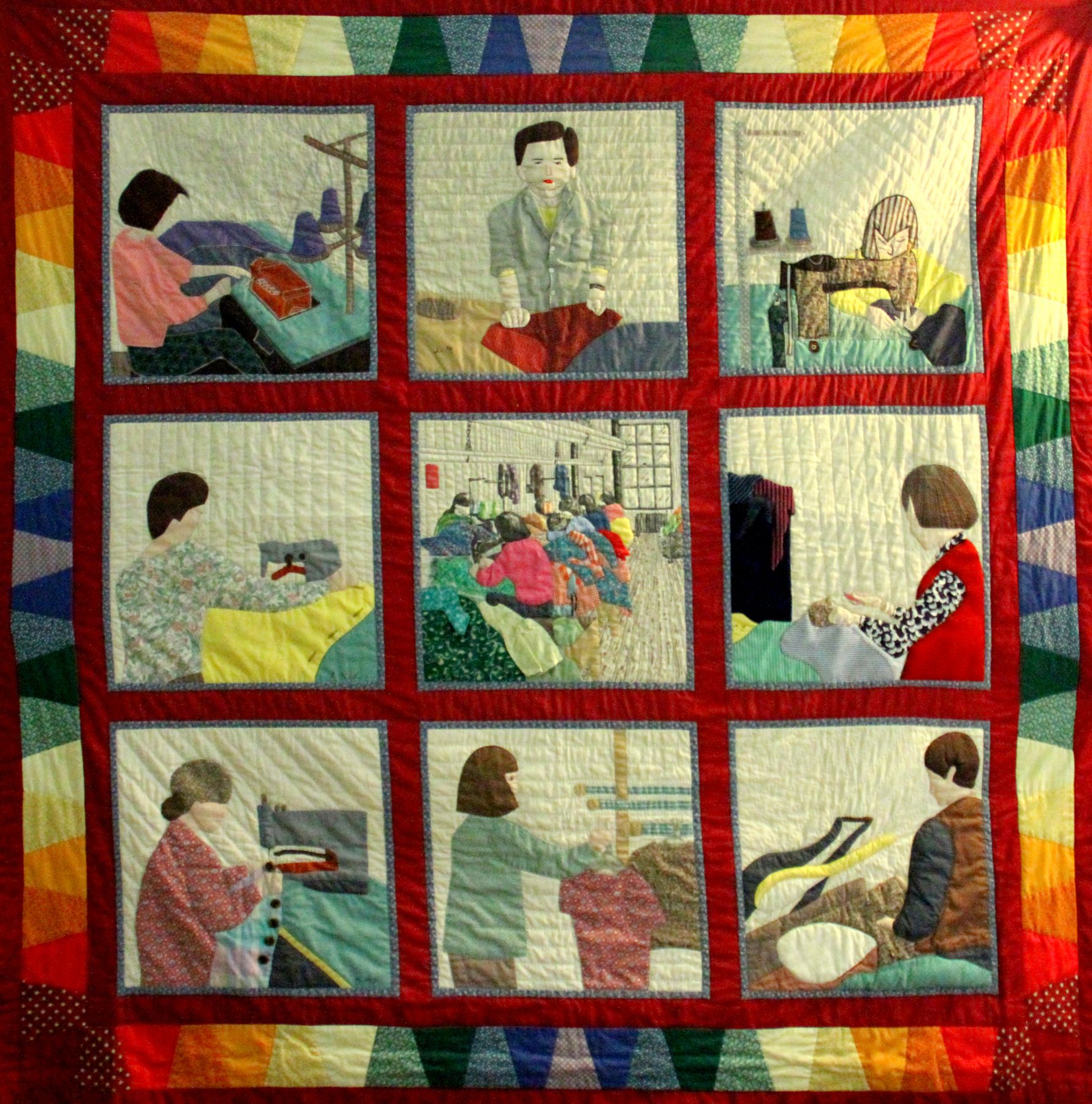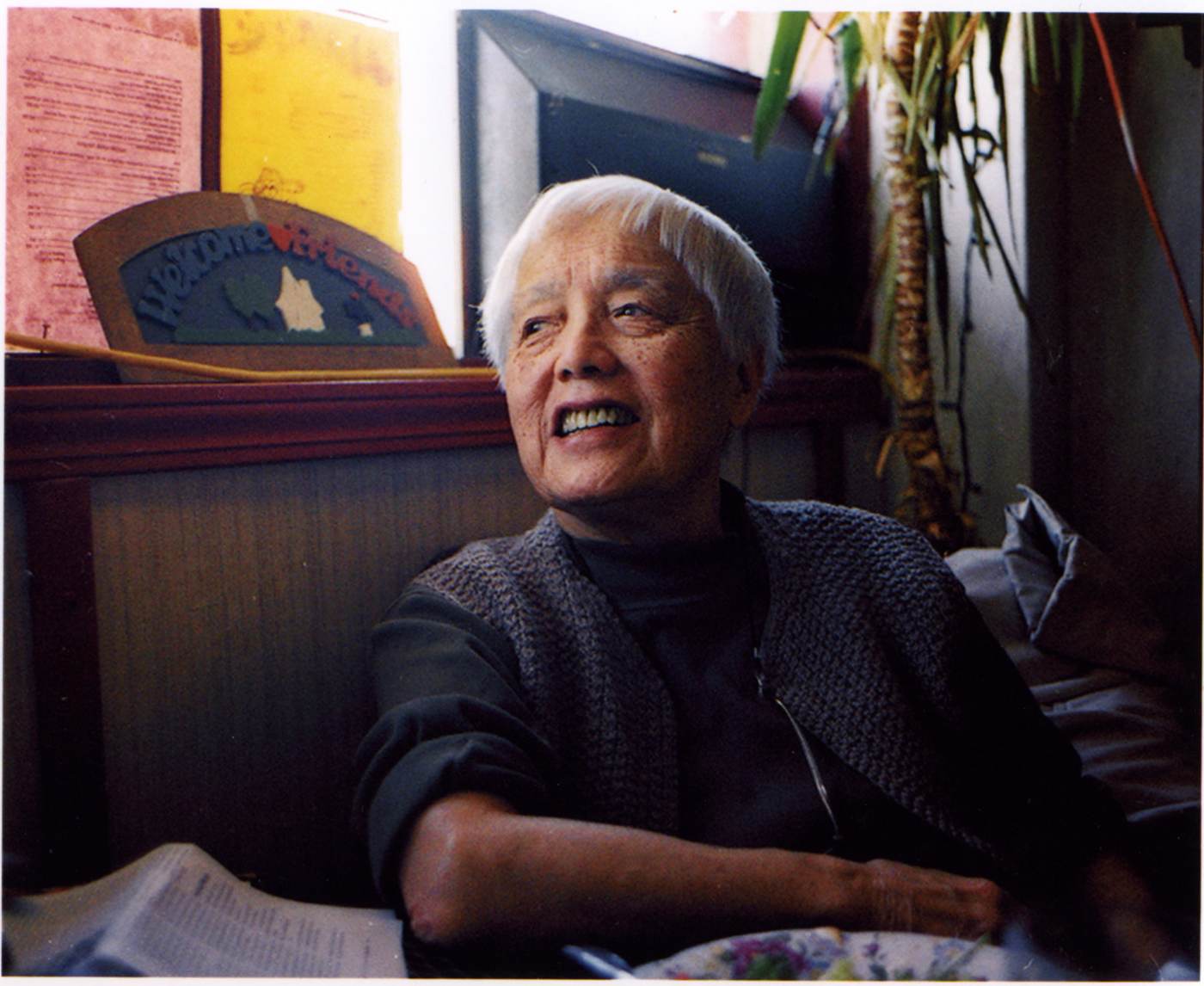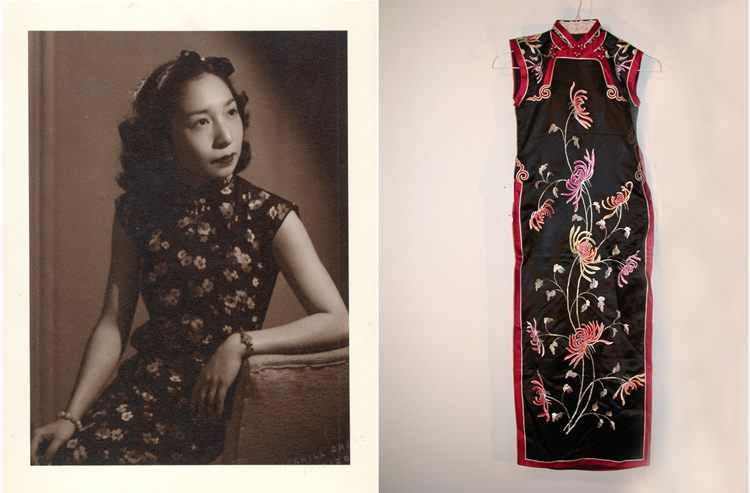The legacy of New York City’s prominent garment industry can be traced back to the mid-19th century when German and East European immigrants brought experienced manufacturing to Manhattan. After a century of rises and falls, the garment industry reached its peak in the 1980s in Chinatown. During this time, Chinese immigrant women fueled the industry, with an estimated 500 factories employing 20,000 workers. In 1982, these workers went on the largest strike in Chinatown’s history to protest their contractor’s attempt to skirt union regulations; after only a few days, every contractor folded to their demands. This quilt was designed by Debbie Lee and sewn by garment workers Ng Mui Leung, Sheung Ngor Leung, Cecilia Lo, Yan Chai Mak, So Fong Lee Ng, Sun Ng, and Heng Yu Yan for MOCA’s 1989 exhibition “Both Sides of the Cloth: Chinese American Women in the New York City Garment Industry.” Trades like sewing have often been demeaned as mere “women’s work,” but the impact of the 1982 strike and artworks such as this underscore the true power of women in the Chinese community, the vital role of garment production for Chinatown’s entire economy, and the highly skilled artistry of such a trade.
Collections馆藏Collections馆藏Collections馆藏Collections馆藏Collections馆藏Collections馆藏Collections馆藏Collections馆藏Collections馆藏Collections馆藏Collections馆藏Collections馆藏Collections馆藏Collections馆藏Collections馆藏Collections馆藏Collections馆藏Collections馆藏Collections馆藏Collections馆藏Collections馆藏Collections馆藏Collections馆藏Collections馆藏Collections馆藏Collections馆藏Collections馆藏Collections馆藏Collections馆藏Collections馆藏Collections馆藏Collections馆藏Collections馆藏Collections馆藏Collections馆藏Collections馆藏Collections馆藏Collections馆藏Collections馆藏Collections馆藏Collections馆藏Collections馆藏Collections馆藏Collections馆藏Collections馆藏Collections馆藏Collections馆藏Collections馆藏Collections馆藏Collections馆藏Collections馆藏Collections馆藏Collections馆藏Collections馆藏Collections馆藏Collections馆藏Collections馆藏Collections馆藏Collections馆藏Collections馆藏Collections馆藏Collections馆藏Collections馆藏Collections馆藏
Garment Workers

16 August 2019 Posted.
Quilt made by garment workers depicting garment work tasks, 1989, Museum of Chinese in America (MOCA) Collection.
由服装工人制作的被子,描绘了服装工作的各项任务分工,1989年,美国华人博物馆(MOCA)馆藏

